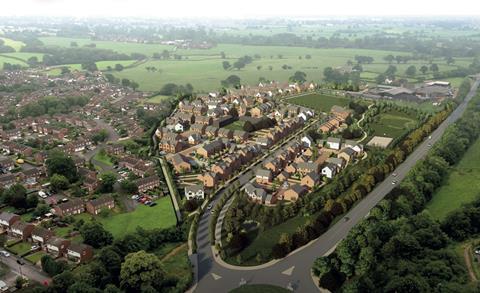One-word scoring system would factor into planning decisions
Michael Gove has backed a proposal to give housing developments Ofsted-style quality ratings as they pass through the planning system.
Under the system, developed by right-wing think tank Policy Exchange, local authorities would assess schemes against a checklist of more than 50 attributes, giving them a score out of 100 which would then be translated into a one-word score that would factor into planning decisions.
The housing and communities secretary described the procedure, dubbed ‘The Matrix’, as “brilliant” and said there was a need for “beautiful, inviting neighbourhoods that foster a sense of community”.

Introducing Policy Exchange’s ‘Better Places’ report yesterday, Gove said: “If we can move beyond the poor quality developments that still blight too much of our urban environment, we can increase public confidence in both our planning system and placemaking design standards.
“That will make it easier to boost our housing supply. For too long, quality has been viewed by many as a planning impediment.”
Gove has made himself unpopular with housing developers in recent months by intervening in planning decisions on design grounds.
In April, he refused permission for a 165-home Berkeley Homes scheme in Kent on the basis that the design was “generic”, and at the beginning of this month called in planning applications for schemes in Leamington Spa and East Cheshire.
>> Sandbach saga: meet the housebuilder standing up to Michael Gove
The founder of the developer behind the latter scheme said he was preparing to “do battle” with the secretary of state over the planning appeal and described him as “overzealous” and “self-important”.
Speaking yesterday, Gove warned against sacrificing quality in the rush to build homes. “If we think of housing purely in numbers, we risk forgetting that we are building not ‘units’ and ‘public open spaces’, but homes and settlements for future generations,” he said.
“In the second half of the 20th century, many western nations made building new homes a priority, but quality was often lost.
“In throwing up poorly designed and constructed housing that lacked the community infrastructure that families need, we created the conditions for social injustice.”
The Matrix is intended to encourage sensitive development, with the checklist including everything from where litter bins are located to the size and style of buildings.
A score of 70% or more would be rated Outstanding, while 60% would achieve Good, 50% average. Anything lower would receive a Poor score.



























No comments yet